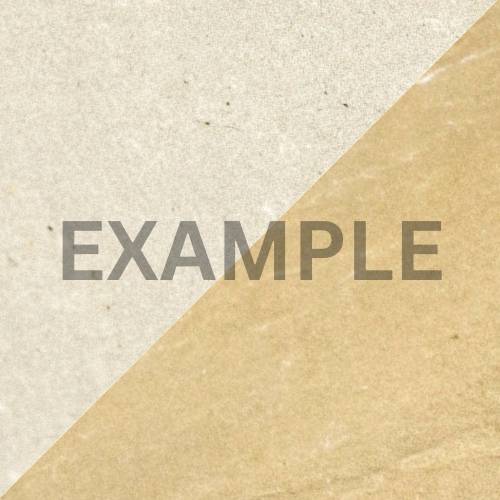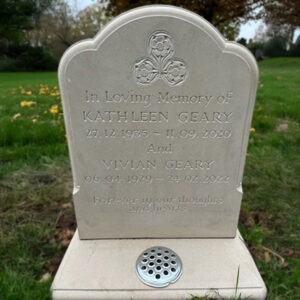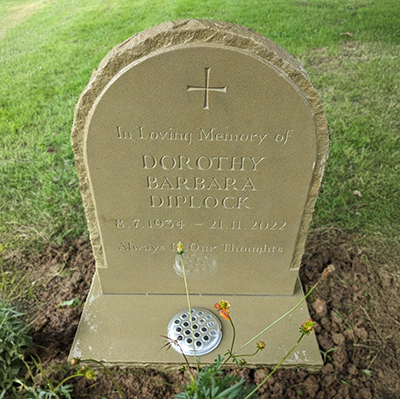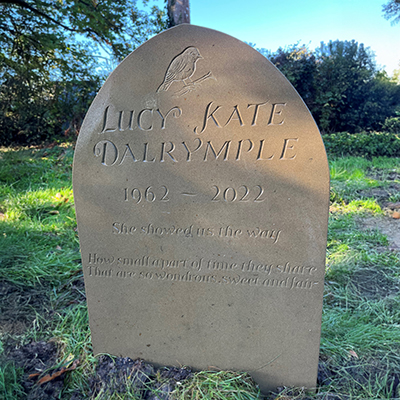Stone Type: Portland and York
Portland and York are the most-used types of limestone, a sedimentary rock formed from calcium carbonate (calcite) and often derived from shallow marine environments and organic debris. Variable through a spectrum of pale, warm colours, Portland in particular may have flecks of fossilised remains or marine organisms apparent in its appearance. Purbeck, a similar limestone material, is sadly no longer available in large enough pieces to create anything but tablet memorials.
Portland and York Stone Information Card
Stone Type: Portland and York
Colour Range:
Portland: cream, occasionally with darker flecks
York: golden, honey, almond
Finish Options: Sanded
Durability Level: Medium
Porosity: High (poor water resistance)
Weather Resistance: Medium (frost resistant but porous)
Maintenance Needs: High (regular professional clean to maintain appearance, avoid impact damage)
Longevity: Weathers over time

Example of Portland and York Stone
Why consider Portland or York?
Portland and York are the most traditional materials used for memorials and have associations of historic villages and stone-built cottages with Portland having been historically used for Commonwealth War Graves and War Memorials. Over time, it weathers, which can add to the appeal for those who like to see the passage of time marked, but its high porosity leads to the development of algae, which requires regular professional cleaning to remove.
Portland is more consistent in appearance, mostly a cream colour, but has a tendency to flecks of fossilised organic matter, such as shells, throughout the stone. York is more variable in appearance, ranging in colour from gold and honey to more grey, almond tones, but is less likely to have prominent flecks.
Portland and York will be accepted in both churchyards and cemeteries and a handcarved and unpainted inscription is particularly favourable to prevent paint colours ‘bleeding’ into the surface. This means it is usually accepted by any Diocese whose churchyards may not permit coloured lettering. Its traditional appearance means simple shapes look particularly striking. The warm colours mean a simple inscription does not look stark but ornate lettering is also suitable.
We do not recommend sandblasting onto these stones due to their relative softness.
Pros
Traditional appearance and associations with public monuments
Suited to inscriptions of all lengths
Shows craftsmanship of handcut lettering and ornaments
Simple, classic appearance with no need to paint or use colour for a distinctive finish
Attractively priced for a traditional stone type
Quarried in the UK in Yorkshire, and Portland
Cons
Lettering ideally handcarved to achieve the most aesthetically pleasing results
Painting not recommended due to risk of ‘bleeding’
Appearance is subject to variation in colour and the type and size of markings as they occur naturally
Growth of algae and moss due to porous nature
Weathering leads to change of shape and legibility in the long term
Examples of our work with Portland and York stone...



Are you looking to creating a lasting tribute in marble stone?
Get in touch with our team, we are here to help.

